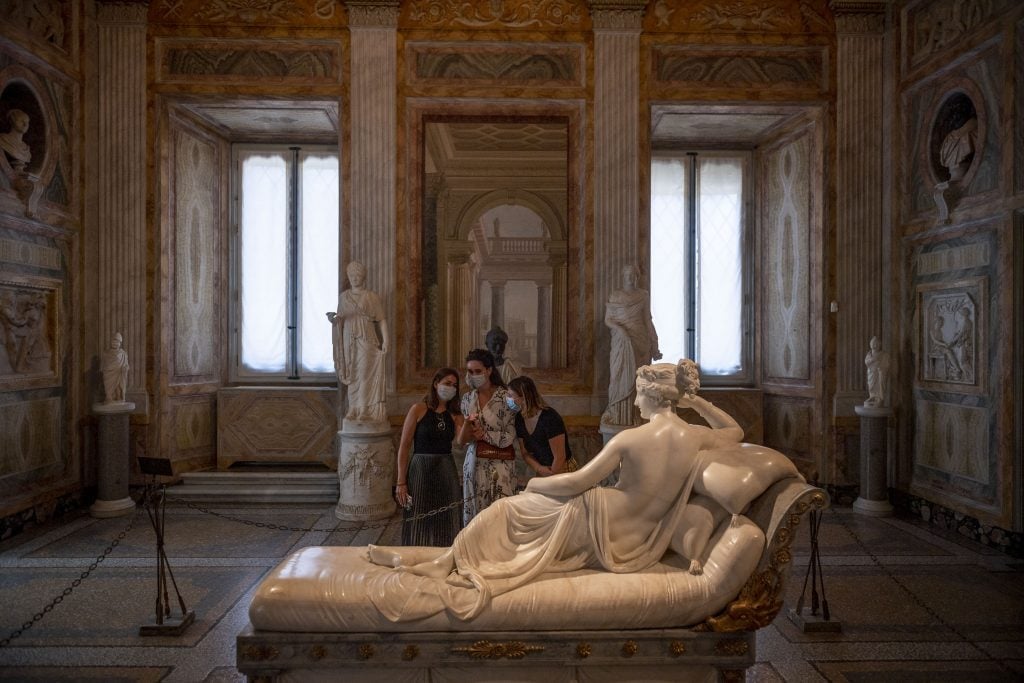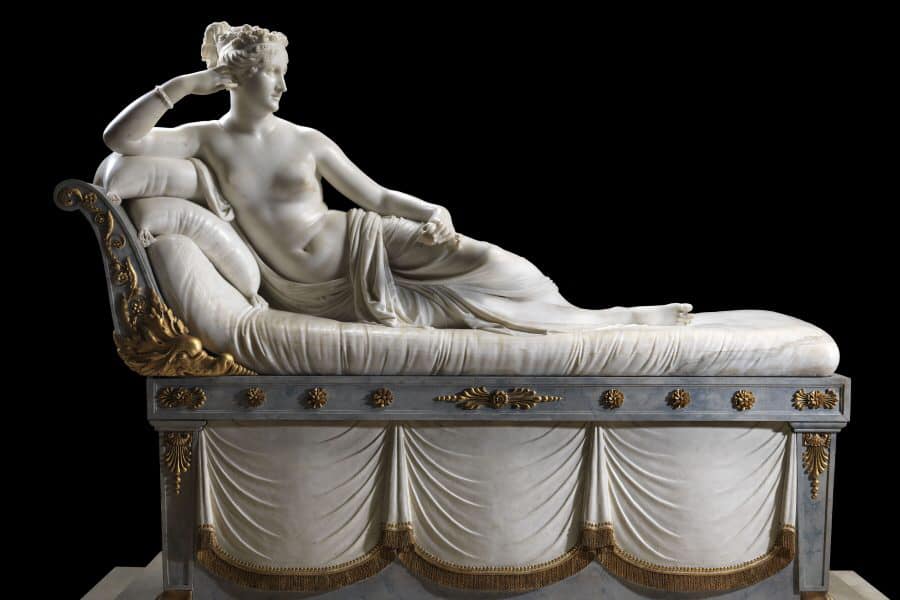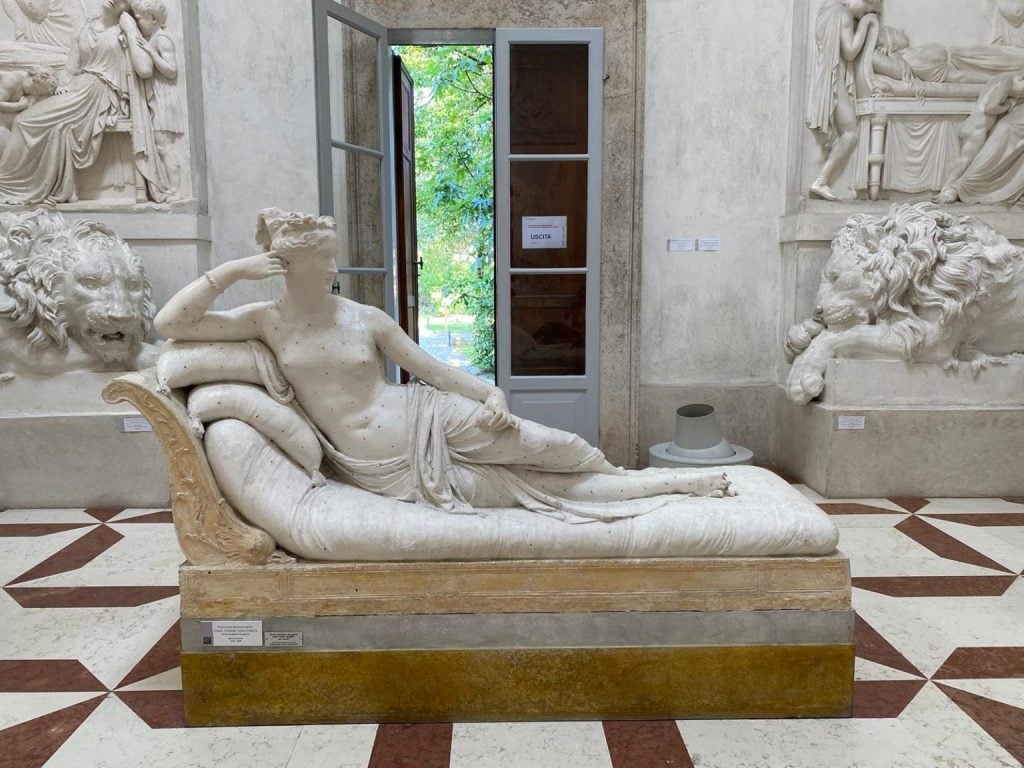Beware the art museum selfie: another inconsiderate art lover has wreaked havoc in their quest for the perfect photo op. This time, the victim was a historic plaster model by the Italian artist Antonio Canova (1757–1822).
On July 31, a misguided Austrian tourist snapped the toes off the Neoclassical sculpture Pauline Bonaparte as Venus Victrix, housed at Possagno’s Museo Antonio Canova in northeast Italy, while attempting to sit on its lap for a photo.
Selfies have become something of a scourge for museums in recent years, leading to accidents that have damaged valuable artworks around the world.
In this most recent case, the guilty party “left the museum in a hurry without reporting the incident,” according to a post on the institution’s Facebook page. Staff discovered the damage shortly thereafter, and reviewed security footage to find the responsible party.

People wearing a protective masks observe the sculpture Paolina Borghese Bonaparte by Antonio Canova, at the Galleria Borghese in Rome after two months of closure during lockdown. Photo by Antonio Masiello/Getty Images.
As museums in Italy reopened after the shutdown, they began to require foreign visitors to sign in by name, which meant that the museum was able to identify the responsible individual—but he or she has not been tracked down since fleeing the scene of the accident, and their name has not been released to the press.
Vittorio Sgarbi, an Italian politician and controversial art critic who serves as president of the Antonio Canova Foundation, called on Italian police in a Facebook post to find the person responsible for this “unprecedented stupidity” and take him into custody, “not allowing him to remain unpunished and return to his homeland.”
New proposed legislation in Italy would increase the maximum sentence for vandalizing art to eight years in prison on top of a fine of €100,000 ($117,000).
The 1804 plaster sculpture is a survivor of World War I, when a Christmas bombing raid hit the museum in 1917. A 2004 restoration reattached the figure’s severed head and repaired damage to the cloth, hands, and feet, according to la Repubblica.

Antonio Canova, Pauline Bonaparte as Venus Victrix (1804). Photo courtesy of Galleria Borghese, Rome
This time around, the museum isn’t delaying efforts to fix the piece. “Luckily, we found the broken parts of the gypsum,” museum director Moira Mascotto told the Austrian Press Agency. “That helps us with the restoration.”
The artwork is part of the museum’s gypsotheca, or “collection of plasters,” containing the original plaster models for Canova’s finished marble works. Established by the artist’s half-brother, Giambattista Sartori, in 1829, it is Europe’s largest monographic gypsotheca.
The celebrated marble version of the statue, which depicts Paolina Bonaparte Borghese, Napoleon’s sister, as Venus, is part of the collection of the Galleria Borghese in Rome.











